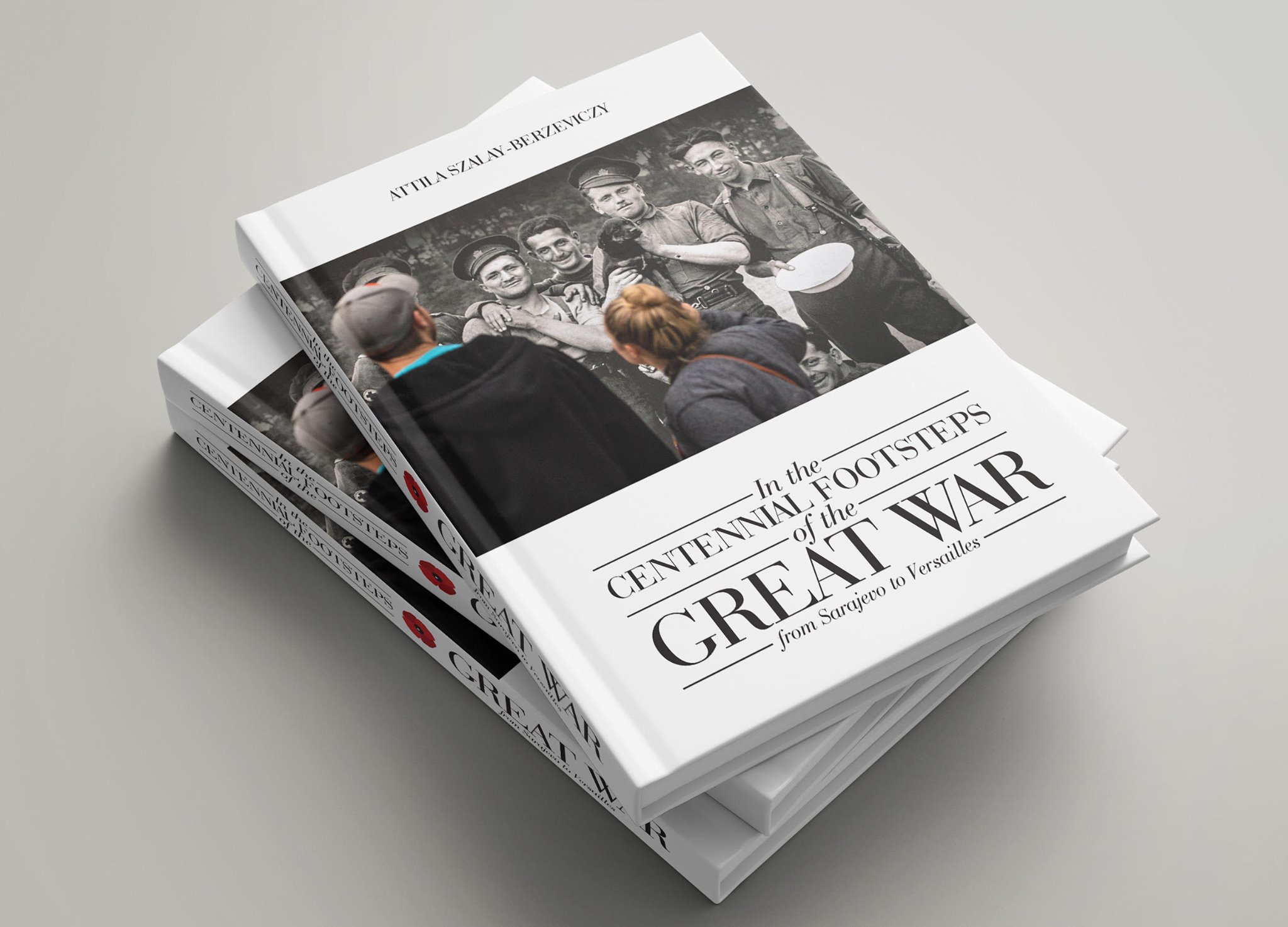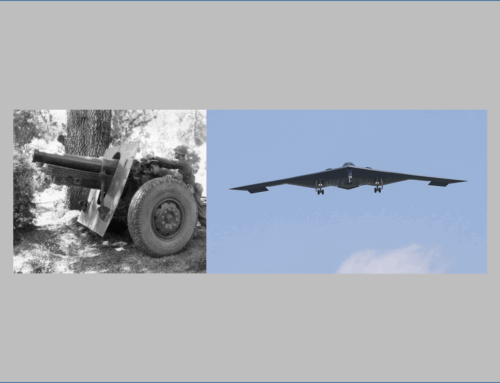Book Launch & Photography Reception, Washington, DC – April 6, 2022 for the two-volume book “In the Centennial Footsteps of the Great War”
Published: 7 March 2022
By Kathy Abbott
Staff Writer

book stack
In recognition of the 105th anniversary of the American entry into World War I, the Daughters of the American Revolution (DAR), the Doughboy Foundation, the Embassy of Hungary, and Mathias Corvinus Collegium invite you to a Book Launching ceremony and Photography Reception for the premiere of Attila Szalay-Berzeviczy’s forthcoming two-volume book, “In the Centennial Footsteps of the Great War.” The event will be held at the DAR Headquarters, located in the heart of Washington D.C at 1776 D St NW, on Wednesday, April 6, 2022 at 5 p.m.
Also attending will be Jari Villanueva, Taps for Veterans, producer and lead bugler for Daily Taps at the National WWI Memorial, in Washington, DC. All proceeds from the event will be used to complete the National WWI Memorial, DC , and to ensure that Daily Taps is played at the Memorial forever.
In Attila Szalay-Berzeviczy’s program notes for the ceremony “Lessons from the First World War to Prevent the Third World War” he notes, “After concluding my centennial project, I am delighted to present to you the story of the Great War in full-color photographs. I very much hope that the images in this volume and the next will inspire you to visit these historic places with your children in order to discover the peace and beauty I found there, and to reflect at the exact location on the tragic events that took place there over one hundred years ago. I also hope that this two-volume book will in some small way contribute and support future commemorations beyond the centenary, and will remind everyone that peace can never be taken for granted. It is my wish that our great-great-grandchildren will be able to commemorate the bicentenary of the outbreak of the Great War on 28 June 2114, after a century of global peace.”
Below Attila Szalay-Berzeviczy reflects on “In the Centennial Footsteps of the Great War” as it chronicles and explains the historical events and the horrors of the First World War through photos that were taken 100 years later, between 2014 and 2021 in each and every theatre of the war, covering altogether fifty-seven different countries:
Lessons from the First World War to prevent the Third World War
By Attila Szalay-Berzeviczy
Throughout history, all wars have been given names. But not the one to which this book is dedicated. It was simply called the Great War. This epithet perfectly reflects the scale of this vast and terrible war, which was beyond the confines of all previous experience. By 1914, demographic changes and industrialization enabled warring states to send armies larger than ever seen before to the battlefield, and to supply them for as long as was needed to achieve victory.
 The Great War became the first global conflict in history, engulfing all five continents, and fought on land, at sea, in the sky, across deserts and high in snowy mountains. It introduced revolutionary new military technologies: submarines, tanks, airships, fighter planes, bombers, quick-firing artillery, flamethrowers and poison gas. The Great War was meant to strengthen the world of imperialism and monarchs and end all wars by the Christmas of 1914.
The Great War became the first global conflict in history, engulfing all five continents, and fought on land, at sea, in the sky, across deserts and high in snowy mountains. It introduced revolutionary new military technologies: submarines, tanks, airships, fighter planes, bombers, quick-firing artillery, flamethrowers and poison gas. The Great War was meant to strengthen the world of imperialism and monarchs and end all wars by the Christmas of 1914.
The reality turned out to be quite different. The Great War became a global military disaster and a European catastrophe: it was to last for fifty-two months and claim the lives of more Austrian, British, Bulgarian, Hungarian, French, Italian and Turkish soldiers than any other conflict in history. It changed the world forever and shaped the twentieth century. The Great War marked the twilight of the British and French colonial empires and signaled the emergence of Australia, New Zealand, Canada, Ireland and Poland as new sovereign states; brought about the end of the German, Austro- Hungarian, Russian and Ottoman monarchies; and propelled the United States of America to the status of global power.
It resulted in the establishment of the Soviet Union, Yugoslavia, Czechoslovakia, and an enlarged Romania, along with new countries in a reshaped Middle East, and set the stage for an even more devastating war some twenty years later by fomenting a brutal struggle between capitalism, fascism and communism. After these epic changes, it is no surprise that one hundred years later, the legacy of the Great War—today also referred to as the First World War or World War One—is still part of our everyday lives.
The events of 1914–1918 and the sacrifices made by our forebears a century ago should always be remembered, because understanding the reasons and the consequences of the First World War will help to prevent the Third World War.
Ever since I was a young boy, I have enjoyed exploring military history. Growing up in Hungary occupied by the Soviet Union, I learned a lot at school about how the Red Army ‘liberated’ Central and Eastern Europe from Nazi Germany. I also heard the stories about my grandfathers, both of whom served on the Eastern Front during the Second World War as officers in the Hungarian Army, fighting on the side of Germany. But we never heard anything about the Great War.
It was simply not part of any private or public discussion, despite the fact that Hungary had played a major role and had lost more than any other nation as a result of the war. Hungary fought from 28 July 1914 until 4 November 1918 on four different fronts. In hostilities against Russia in Galicia, Romania in Transylvania, Serbia in the Balkans and Italy in the Isonzo Valley, over 600,000 Hungarian soldiers were killed out of a population of 18 million.
Afterward, the Paris Peace Conference meted out an incomparably harsher punishment on Hungary than on Germany, Austria, Bulgaria or Turkey. Only when I grew up and began to be more interested in Europe’s tragic twentieth century did I realise that the First World War had in fact played a much more pivotal and complex role in shaping the world than the Second World War.
 I became even more eager to know everything about the 1914–1918 period when I learned about the involvement of my great-great- grandfather Albert Berzeviczy and his cousin Béla Berzeviczy in the Great War. Albert, as president of the Hungarian Academy of Science and a close friend of Prime Minister István Tisza, as well as a loyal supporter of Kaiser Franz Joseph I, strongly and publicly opposed the declaration of war on Serbia, as he feared that it would only lead to the disintegration of the Dual Monarchy that he very much loved. Béla was a high-ranking officer of the Austro-Hungarian Army, leading various cavalry and infantry army units into battle on the Eastern, Italian and Romanian Fronts from the first day of the war to the last one, before being appointed Chief of Staff of the Hungarian Royal Honvéd Army in March 1920.
I became even more eager to know everything about the 1914–1918 period when I learned about the involvement of my great-great- grandfather Albert Berzeviczy and his cousin Béla Berzeviczy in the Great War. Albert, as president of the Hungarian Academy of Science and a close friend of Prime Minister István Tisza, as well as a loyal supporter of Kaiser Franz Joseph I, strongly and publicly opposed the declaration of war on Serbia, as he feared that it would only lead to the disintegration of the Dual Monarchy that he very much loved. Béla was a high-ranking officer of the Austro-Hungarian Army, leading various cavalry and infantry army units into battle on the Eastern, Italian and Romanian Fronts from the first day of the war to the last one, before being appointed Chief of Staff of the Hungarian Royal Honvéd Army in March 1920.
In 2013, I moved from Budapest to Vienna for eight years, which motivated me even more to delve into the causes of the fall of the Austro-Hungarian Empire. From this point on, I was inspired to contribute in some way to the commemorations of the approaching centenary of the First World War.
As a photographer, I knew that nothing expresses itself quite like a finely crafted photography book.
The devastating events of the First World War were captured as they occurred in myriad photographs. Since then, tens of thousands of books with these black-and-white photographs depicting the carnage have been published. I thus decided to work on a two-volume book on the occasion of the 100th anniversary of the First World War that is not only very different from anything that has been published before in terms of its content, but also unrepeatable.
To achieve this goal, I embarked on an eight-year- long journey in 2014, mirroring the events of war as they had unfolded one hundred years earlier. Following in the footsteps of the Great War with my Nikon D4 and D5 cameras, I set about photographing the centennial commemorations, the war memorials, the battlefield monuments, the military cemeteries and the battle re-enactments.
During this deeply personal journey, I travelled many thousands of miles—by airplane, by car, by ship, and on foot—spanning the entire theatre of this truly global war, going to places I otherwise probably would never have thought to visit but which proved to be simply amazing: the Masurian Lakes in Poland, Madain Salih in Saudi Arabia, the Island of Helgoland in Germany, Lake Narach in Belarus, the mountains of Albania and Macedonia, the Falkland Islands, and the northern tip of Mozambique.
 I fell in love with Ieper, Lviv and Sarajevo, and I enjoyed every minute I spent in Amiens, Arras, Bardejov, Belgrade, Bitola, Çanakkale, Cortina, Dojran, Kobarid, Giżycko, Prizren, Przemyśl, Reims, Verdun and Târgu Secuiesc, the towns that became my base camps to explore countless battlefields. The two-volume book chronicles and explains the historical events of the Great War through photos that were taken one hundred years later, between 2014 and 2021, in each and every theatre of the war, covering altogether fifty- seven different countries.
I fell in love with Ieper, Lviv and Sarajevo, and I enjoyed every minute I spent in Amiens, Arras, Bardejov, Belgrade, Bitola, Çanakkale, Cortina, Dojran, Kobarid, Giżycko, Prizren, Przemyśl, Reims, Verdun and Târgu Secuiesc, the towns that became my base camps to explore countless battlefields. The two-volume book chronicles and explains the historical events of the Great War through photos that were taken one hundred years later, between 2014 and 2021, in each and every theatre of the war, covering altogether fifty- seven different countries.
Each trip was carefully planned and thoroughly researched. I arrived at each destination with a list of images I was hoping to find. But not only did I need to know what, why, and where to look, but also when I could photograph in the most suitable light conditions.
I also had to make sure that the photos were taken in weather conditions that were the same as a hundred years earlier. Therefore, in many cases I had to return to the same location several times.
For the preparation and for the writing of the text of the two volumes of my book, I have purchased a library of books over the years. I am more than conscious of the fact that for every sentence I wrote in the two volumes, a plethora of specialist works was available. I cannot claim to have carried out primary research. Instead, I have had to depend upon the excellent work of a great number of historians. Such an overview as I am presenting, therefore, must rest on the countless achievements of others.
I have relied on many indispensable works of historical scholarship—monographs, editions of contemporary documentation, statistical analyses, and specialized studies of individual countries. The bibliography reflects my debts to other scholars, who I hope will accept my deep appreciation of their great endeavors.
Travelling across what were the Western and Italian Fronts was very different from my experiences on the Eastern and Balkan Fronts. France, Belgium, and Italy each have a rich Great War remembrance culture and literature, with well-maintained cemeteries, impressive memorials and monuments, giving me so much to photograph at sites that were easy to locate.
On top of that, throughout the period 2014–2018, these countries were the hosts of numerous commemorations organized by the governments of former Allied states. The most significant events took place at the centenary of the Battle of Liège, Gallipoli, Verdun, the Somme, Vimy Ridge, Passchendaele and Amiens, attended by the descendants, heads of states and governments, and representatives of the different European royal families. Working in Central and Eastern Europe and in the Balkans was considerably more challenging.
The literature available to help me find exact locations was scarce—that in English even more so—and so I had to rely on the support of local friends to identify sites and events. For various historical reasons, many of the countries of Central and Eastern Europe have sadly not made much effort to keep the memory of the First World War alive. Meaningful memorials and monuments of the war can be found only in Romania and Serbia.
 Aside from a few state-sponsored events that took place in these two countries, there were no high- profile commemorations during the centenary in the region. In Hungary, where 4 June was instituted in 2010 as the Day of Remembrance, the 100th anniversary of the devastating Treaty of Trianon was commemorated in a very muted manner in 2020 due to the COVID-19 pandemic. In Austria and Germany, the years of the centenary passed by barely noticed.
Aside from a few state-sponsored events that took place in these two countries, there were no high- profile commemorations during the centenary in the region. In Hungary, where 4 June was instituted in 2010 as the Day of Remembrance, the 100th anniversary of the devastating Treaty of Trianon was commemorated in a very muted manner in 2020 due to the COVID-19 pandemic. In Austria and Germany, the years of the centenary passed by barely noticed.
Curiously, in Eastern Europe there are many more re-enactments of Great War battles than in Western Europe, some of these quite spectacular. Numerous events are hosted annually in Belarus, Poland, Russia and Slovakia, organised by local re-enactment associations. Unaware as I was at the start of my journey of their popularity and the dedication of those involved to preserve the memory of the war, it was these re-enactments that were to provide me with a new perspective to my two-volume book.
My photography came to rely heavily on the passionate work of local re-enactment communities, whose members play their roles with the utmost dedication out of respect for those who fought in the Great War. Many of the images in this two-volume book—which were in some cases enhanced by special effects using the Photoshop program—depict these actors dressed impeccably in historical costumes as they recreate scenes from battles at their original sites. I am very grateful to every one of them, because their enthusiastic commitment helped me evoke the spirit of the past in my photos.
Without the re-enactors’ dedicated work, I would not have been able to take you back in time to 1914-1918 with a sense of how it must have been for those who experienced the war first-hand. For the same reason, I am grateful to my photographer friends and colleagues as well who each contributed with one or two wonderful photos of events I was unable to attend, but that I considered to be crucial to telling the story of the Great War.
After concluding my centennial project, I am delighted to present to you the story of the Great War in full-color photographs. I very much hope that the images in this volume and the next will inspire you to visit these historic places with your children in order to discover the peace and beauty I found there, and to reflect at the exact location on the tragic events that took place there over one hundred years ago.
I also hope that this two- volume book will in some small way contribute and support future commemorations beyond the centenary, and will remind everyone that peace can never be taken for granted. It is my wish that our great-great-grandchildren will be able to commemorate the bicentenary of the outbreak of the Great War on 28 June 2114, after a century of global peace.



